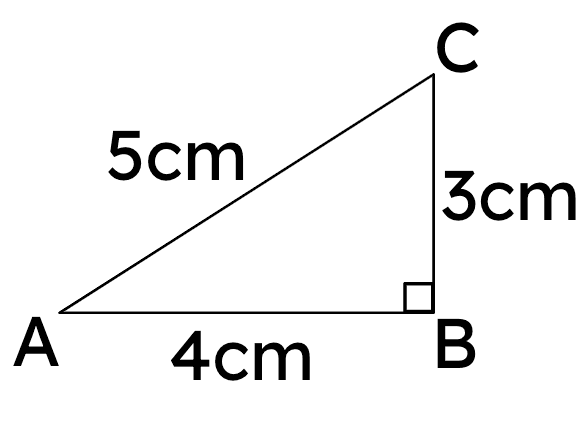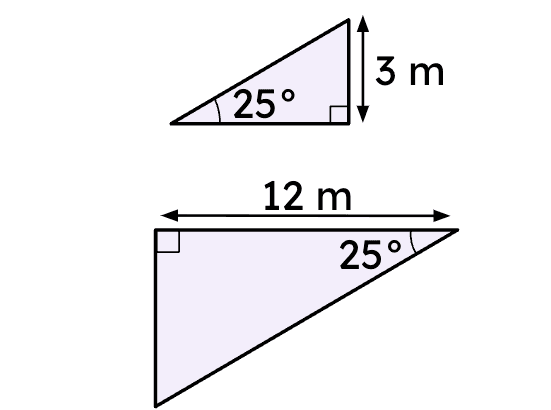Myths about teaching can hold you back
- Year 9
Using the cosine ratio
I can use the cosine ratio to find the missing side or angle in a right-angled triangle.
- Year 9
Using the cosine ratio
I can use the cosine ratio to find the missing side or angle in a right-angled triangle.
These resources were made for remote use during the pandemic, not classroom teaching.
Switch to our new teaching resources now - designed by teachers and leading subject experts, and tested in classrooms.
Lesson details
Key learning points
- The cosine ratio involves the hypotenuse, adjacent and the angle.
- If you know the length of the hypotenuse and the size of the angle, you can use the cosine ratio.
- If you know the length of the adjacent and the size of the angle, you can use the cosine ratio.
- If you know the length of the hypotenuse and adjacent, you can use the cosine ratio.
Keywords
Hypotenuse - The hypotenuse is the side of a right-angled triangle which is opposite the right angle.
Adjacent - The adjacent side of a right-angled triangle is the side which is next to both the right angle and the marked angle.
Trigonometric functions - Trigonometric functions are commonly defined as ratios of two sides of a right-angled triangle containing the angle.
Cosine function - The cosine of an angle (cos(θ°)) is the x-coordinate of point P on the triangle formed inside the unit circle.
Common misconception
The cosine formula is only used to find the length of a side adjacent to an angle.
The cosine formula can be used to find the length of a side adjacent to an angle. A rearrangement of the formula also allows us to find the length of the hypotenuse given the adjacent side. The arccosine function allows us to find the angle, itself.
To help you plan your year 9 maths lesson on: Using the cosine ratio, download all teaching resources for free and adapt to suit your pupils' needs...
To help you plan your year 9 maths lesson on: Using the cosine ratio, download all teaching resources for free and adapt to suit your pupils' needs.
The starter quiz will activate and check your pupils' prior knowledge, with versions available both with and without answers in PDF format.
We use learning cycles to break down learning into key concepts or ideas linked to the learning outcome. Each learning cycle features explanations with checks for understanding and practice tasks with feedback. All of this is found in our slide decks, ready for you to download and edit. The practice tasks are also available as printable worksheets and some lessons have additional materials with extra material you might need for teaching the lesson.
The assessment exit quiz will test your pupils' understanding of the key learning points.
Our video is a tool for planning, showing how other teachers might teach the lesson, offering helpful tips, modelled explanations and inspiration for your own delivery in the classroom. Plus, you can set it as homework or revision for pupils and keep their learning on track by sharing an online pupil version of this lesson.
Explore more key stage 3 maths lessons from the Trigonometry unit, dive into the full secondary maths curriculum, or learn more about lesson planning.

Equipment
Licence
Prior knowledge starter quiz
6 Questions
Q1.In a right triangle, if the hypotenuse is 75 cm and a second side is 60 cm, what is the length of the third side? (Use a calculator to help you.)
Q2.Which of the following statements is true for these triangles?

Q3.In a right triangle, if the shortest sides are 7.5 cm and 18 cm, what is the length of the hypotenuse? (Use a calculator to help you.)
Q4.Would a triangle ABC with sides AB = 16cm, BC = 10cm, AC = 21cm be similar to the one shown in the diagram?

Q5.Would a triangle ABC with sides AB = 12 cm, BC = 9 cm, AC = 15 cm be similar to the one shown in the diagram?

Q6.For this pair of triangles, can you determine whether they are similar without using side lengths?

Assessment exit quiz
6 Questions
Q1.Using triangle ABC, if θ = 38ᵒ and hypotenuse AB = 14 cm, what is the length of the adjacent side AC to 1 d.p. ?

Q2.What is the value of cos(20ᵒ) to 2 d.p. ?
Q3.Using triangle ABC, if θ = 38ᵒ and AC = 6 cm, what is the length of the hypotenuse AB to 1 d.p. ?

Q4.What does the 'co' in Cosine mean?
Q5.Using triangle ABC, if θ = 30ᵒ and AC = 12 cm, what is the length of the hypotenuse AB to 1 d.p. ?

Q6.Using triangle ABC, if θ = 30ᵒ and AC = 9 cm, what is the length of the hypotenuse AB to 1 d.p. ?



